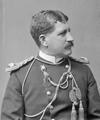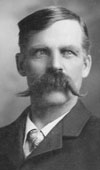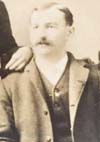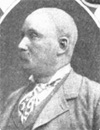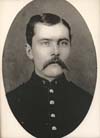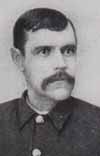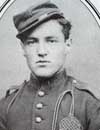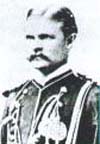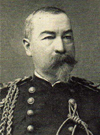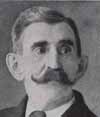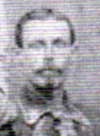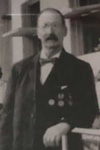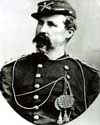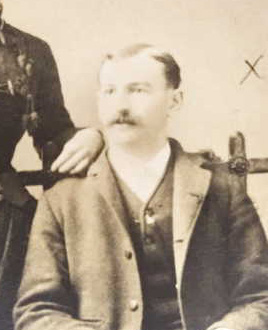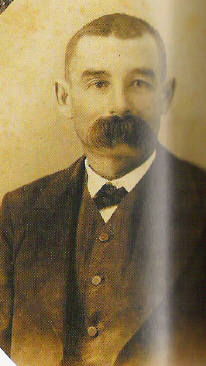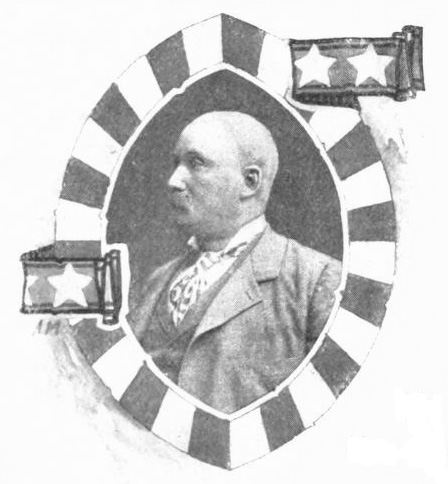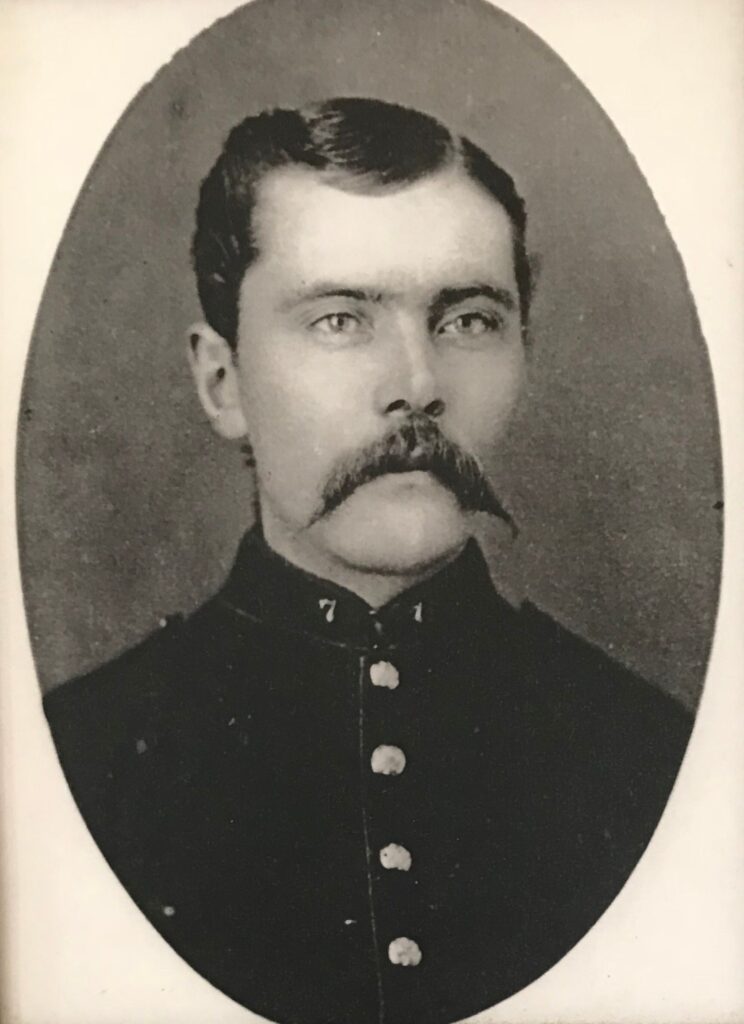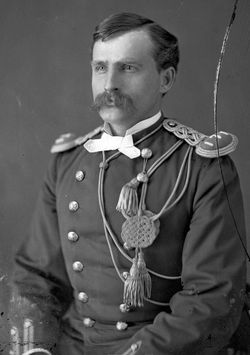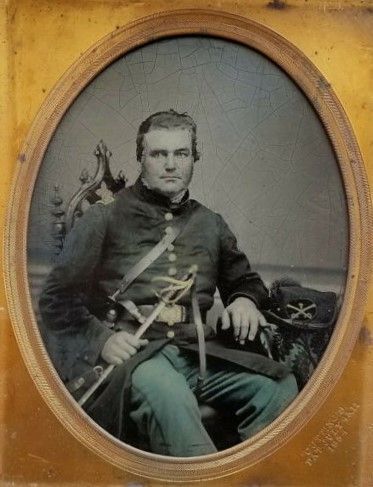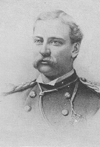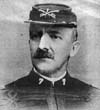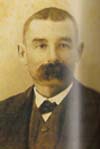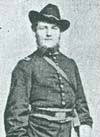Samuel J. McCormick died of a heart attack on September 10, 1908, at Fort Meade, South Dakota, and was buried in the Bear Butte Cemetery in Sturgis. He was a Private in Company G who participated in the valley and hilltop fights. See also 7th Cavalry Troopers in South Dakota.
Winfield Scott Edgerly (left) died in Farmington, New Hampshire, on September 10, 1927, and was buried in Arlington National Cemetery in Arlington, Virginia. He was the Second Lieutenant for Company D who went on scouting duty and participated in the hilltop fight.
Lansing A. Moore (left) was born on September 12, 1854, in Hoboken, New Jersey. He was a Private with Company F who was with the pack train and participated in the hilltop fight during the battle.
Franklin Webster Sniffin was born in New York City on September 12, 1857. He was a Private in Company M who participated in the valley and hilltop fights.
Peter Eixenberger (right) died of a heart attack on September 12, 1917, in Sykes, Montana, and was buried in the St. Aloysius Cemetery in Sturgis, South Dakota. He was with the band, so he was on detached service at the time of the battle. See also 7th Cavalry Troopers in South Dakota.
Jan Mollar, who was also known as James Moller, was born in Orsle, Denmark, on September 13, 1849. He was a Private in Company H who was wounded during the hilltop fight.
Nathan T. Brown died on September 13, 1877, at Canyon Creek, Montana Territory, during a battle with the Nez Perce. He was originally buried at Fort Assinniboine, Montana Territory, and was reinterred in the Custer National Cemetery on Crow Agency in Montana.
Emil Taube (left) married Mary Adams Huber on September 13, 1882. He was a Private in Company K who was not present at the battle due to detached service at Powder River, Montana.
Joseph C. Bates committed suicide in Sturgis, South Dakota, on September 13, 1893, and was buried in the Bear Butte Cemetery there. He was a Private in Company M who participated in the valley and hilltop fights. See also 7th Cavalry Troopers in South Dakota.
Richard P. Hanley (right) died on September 13, 1923, in Boston, Massachusetts, and was buried in the Holy Cross Cemetery in Malden, Massachusetts. He was a Sergeant with Company C who was with the pack train and in the hilltop fight. He was awarded the Medal of Honor for his actions during the battle.
Hobart Ryder died in Wheeling, West Virginia, sometime after September 14, 1893. He was a Private in Company M who served as a hospital orderly for Dr. Porter and participated in the valley and hilltop fights.
Isaac Fowler (left) was born on September 15, 1844, in Darke County, Ohio. He was a Private with Company C who was with the pack train and in the hilltop fight.
Thomas O’Brien died of typhoid fever at Fort Buford, Dakota Territory, on September 15, 1876. He was initially buried in the Post Cemetery there and was later reinterred in the Custer National Cemetery, Crow Agency, Montana.
Henry Charles Weihe was born on September 16, 1847, in Saxony, Germany. He was a Sergeant in Company M who participated in the valley fight and was wounded during the hilltop fight. See also 7th Cavalry Troopers in South Dakota.
